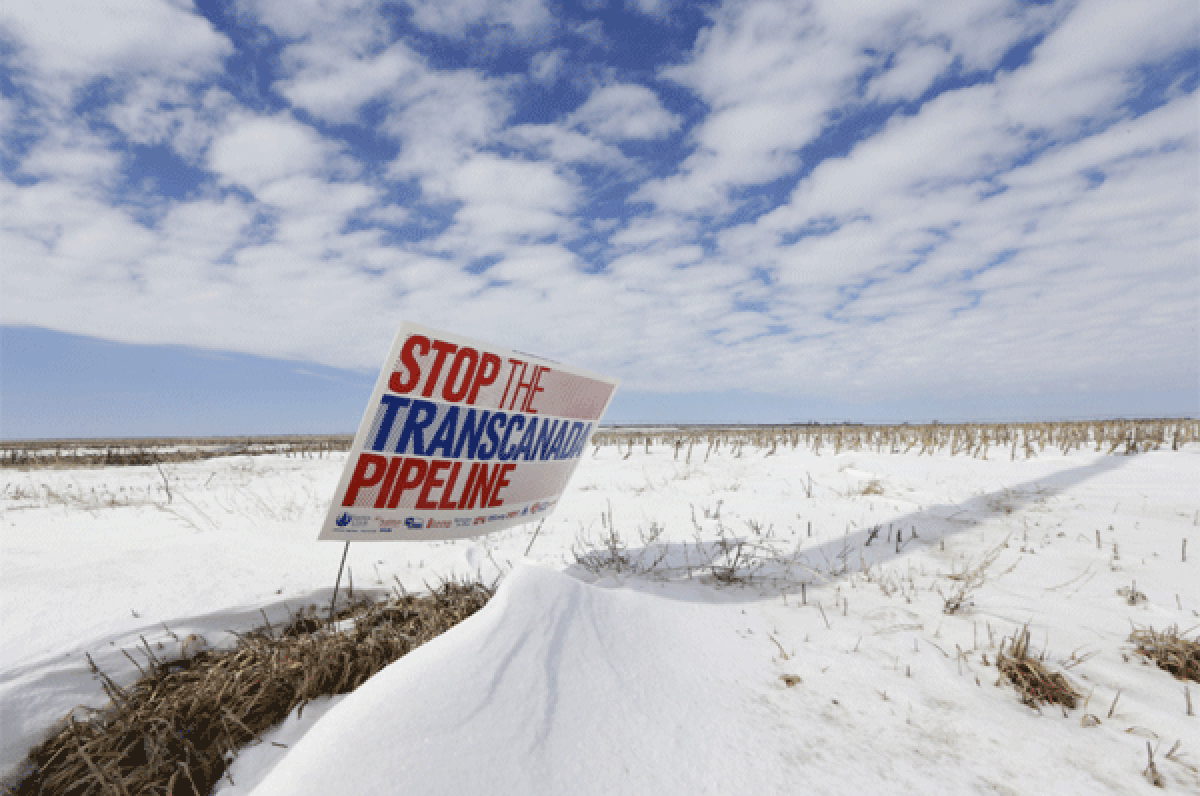Keystone XL: The pipeline to disaster

- Share via
In March, the State Department gave the president cover to open a big spigot that will hitch our country to one of the dirtiest fuels on Earth for 40 years or more. The draft environmental review of the Keystone XL pipeline acknowledges tar sands are nasty stuff for the environment, but concludes that the project is OK because this oil will get to market anyway — with or without a pipeline.
A public comment period is underway through April 22, after which the department will prepare a final statement to help the administration decide whether the pipeline is in the “national interest.” If the conclusion is yes, a Canadian company, TransCanada, gets a permit to build a pipeline to transport toxic tar sands through our heartland, connecting to refineries in the Gulf of Mexico, for likely export to China.
Around the world, emissions of heat-trapping gases like carbon dioxide continue to soar. Australia is now finishing “the angry summer” — 123 extreme weather records broken in 90 days — which government sources link to climate change. Last year, 2012, was also the hottest year on record in the contiguous United States.
Yet a bipartisan chorus says the pipeline is no big deal. Some suggest the administration is better off focusing on stronger EPA regulations, as if it were an either-or proposition. Others say we need the temporary jobs. Still others torture logic by claiming that not building the pipeline will be worse because that would force the tar sands to be shipped overseas, with the greater carbon footprint that entails — even though analysts say this is the fate of most Keystone XL oil anyway.
The perspective of pipeline apologists is contrary to the laws of physics and basic economics, neither of which gives a damn about politics. Here are a few points the State Department ought to reconsider:
Nothing to see here. The draft review suggests the climate impacts of the pipeline are limited because the project will not substantially “induce growth in the rate of extraction in the oil sands.” This narrow analysis misses the mark. Researchers now say that the Alberta tar sands contain 360 to 510 billion tons of carbon — more than double that of all oil burned in human history. While only a fraction is considered economically recoverable right now, we humans are genius at finding new and better ways to dig junk out of the ground. Digging begets more digging. Once the big spigot is open, TransCanada will have every incentive to milk the massive tar sands basin for all it is worth.
It’s out of our hands. The idea that the tar sands would get developed at the same rate without the pipeline is undercut by mainstream financial analysis and industry documents that show Keystone XL is the linchpin for tar sands expansion in the next decade. Tar sands may get to market without it, but at a slower rate and a much greater cost. For example, Canadian research and investment advisory firm Peters & Co. says moving tar sands by rail would spike costs twofold, from $7 to $11 a barrel to $15 to $20 a barrel.
Some tar sands will inevitably cross the border on trains and in smaller pipelines but not at the scale permitted by Keystone XL. Only with a substantial increase in pipelines to the coasts, and with access to markets overseas, can the tar sands industry meet its eye-popping production targets — a full tripling of output in coming decades — along with the crushing blow that would deliver to our climate.
Going backward is in the national interest. According to law, the administration’s final decision will be based on whether the pipeline is in the “national interest.” While the world will be stuck with the climate damages, the U.S. will be on the hook for spills, environmental degradation and much more. Not only is it a bad marriage but a long one: TransCanada’s estimated annual depreciation rate for “oil pipeline and pumping equipment” is 2% to 2.5%, which means a pipeline with a useful life of 40 to 50 years.
Just last week, a Canadian train slid off the tracks in Minnesota, spewing as much as 30,000 gallons of Canadian crude on U.S. soil. A few days later, a pipeline carrying crude from Canada leaked “a few thousand” barrels in Arkansas. Is this in the national interest?
Once we get a price on carbon that makes fossil fuels pay their true cost, the tar sands will start to shut down. But if the pipeline opens the big spigot in the meantime, it will be difficult to avoid great harm.
The science on climate change has been in for a quarter of a century. There are no more mixed messages, just catastrophe after catastrophe. The president stands at a fork in the road: Rejecting the pipeline will show the world we are serious and determined to be on the right side of history. Approving it will signal we are too entrenched with business-as-usual to do what’s right by the people, planet and future generations.
All of President Obama’s achievements will fade if he doesn’t act swiftly and decisively on climate change. Rejecting Keystone is the first step.
Climate scientist James Hansen has just announced his retirement as head of the NASA Goddard Institute for Space Studies in New York.
More to Read
A cure for the common opinion
Get thought-provoking perspectives with our weekly newsletter.
You may occasionally receive promotional content from the Los Angeles Times.








